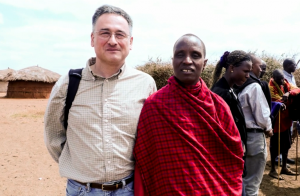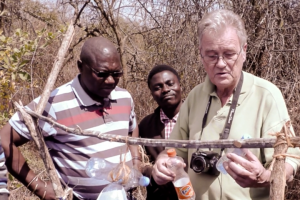
At the workshop, I showed my colleagues how to access real-time images captured by NASA sensors such as TRMM, MODIS, LANDSAT to monitor precipitation, temperature, vegetation and water bodies. These environmental factors influence the reproduction of mosquitoes, tsetse flies and sand flies, which are vectors for the diseases I mentioned above.
At the workshop, I showed my colleagues how to access real-time images captured by NASA sensors such as TRMM, MODIS, Landsat to monitor precipitation, temperature, vegetation and water bodies. These environmental factors influence the reproduction of mosquitoes, tsetse flies and sand flies, which are vectors for the diseases I mentioned above.
For example, using this type of information, my team has discovered that flood conditions in the April-May-June season in South Sudan will reduce sandfly activity and therefore the transmission of leishmaniasis from September to November.

During a field visit to a Maasai village two hours’ drive from Arusha, I was fascinated by the behavior of the chief, who was constantly on his mobile phone, connecting to people in the area. The access and use of mobile technology by this Maasai chief in such a remote area made me think about the possibility of delivering real-time information derived from NASA sensors directly to people’s cell phones there, so they can be alerted to areas and periods when there is a higher risk of trypanosomiasis transmission.
Using the IRI Data Library’s Maproom interface, anybody can access NASA products via smartphone. The chief of the Maasai village will be able to now get the location of pastures, water bodies, rainfall and temperature conditions —all factors in the transmission of the trypanosomiasis–in real time. Our next challenge will be to train these villagers on how to use these products for control measures!
Further Information:
+ Field Notes: Climate, Health and the Maasai
+ Video: “Climate, Health and the Maasai” via vimeo

Be Part of What’s Next: Emerging Applications of Landsat at AGU24
Anyone making innovative use of Landsat data to meet societal needs today and during coming decades is encouraged to submit and abstract for the upcoming “Emerging Science Applications of Landsat” session at AGU24.





